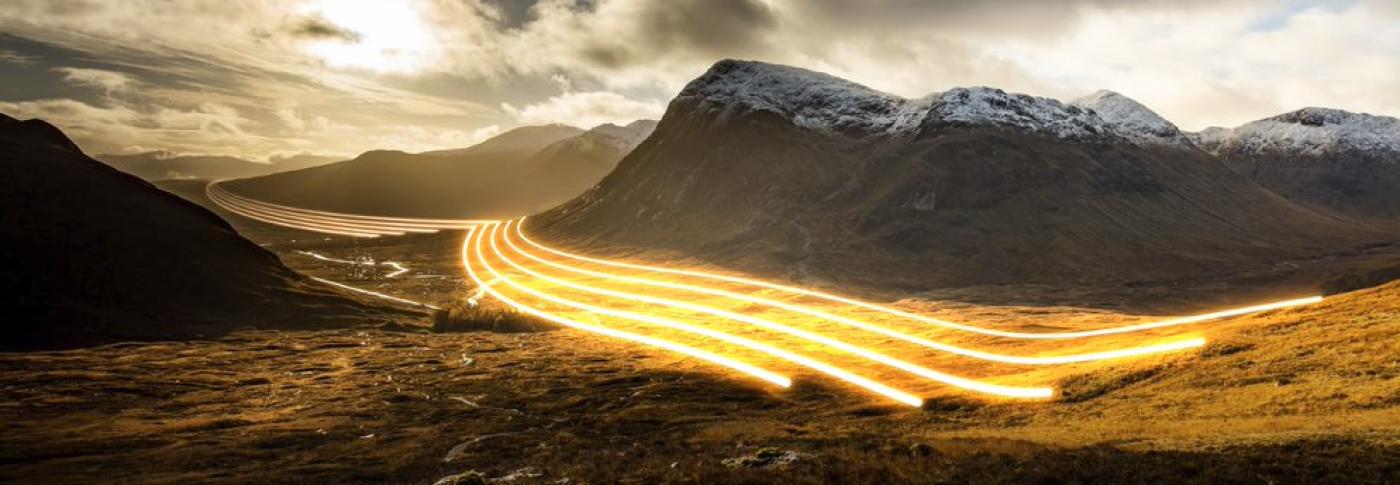
How our new spin on grid stability is a boost for renewable generation
14 Jul 2020 - 4 minute read
Earlier this year we announced a new approach to managing some key characteristics of the electricity system. Our stability pathfinder and the market it’s creating for stability services is a world-first, and – as our head of networks, Julian Leslie, explains below – it’s helping us harness Britain’s ever-higher volumes of renewable generation.
It won’t have been obvious to many outside the energy industry, but the covid-19 lockdown and associated drop in national demand has effectively sent our electricity system five years into the future.
By 2025, our ambition is to be able to operate the system entirely with zero carbon sources of electricity. We’re not ready to do that yet, but the conditions we anticipate having to manage half a decade from now arrived early courtesy of lockdown.
If I looked at the electricity mix today and saw 0% for gas, I’d be concerned about inertia levels. In five years that will have completely changed
Unprecedented low demand for electricity, coupled with record levels of renewable generation throughout much of spring, meant zero carbon fuels were often making up most of Great Britain’s generation mix.
So the latest stage of our stability pathfinder – which will help us manage a grid rich in renewable generation – is coming not a moment too soon.
Why do renewables give us a stability challenge?
There are certain things we need to keep the grid humming along at a stable 50Hz frequency which – historically – only big coal and gas stations have been able to provide.
You already know about one of the things these power plants give us: electricity. But as a by-product of generating megawatts, their heavy spinning turbines – whose rotating speed synchs with the grid’s frequency – also bring us other crucial ingredients for a stable grid.
The most important is inertia – which I explained in a recent blog – but they also provide voltage control and reactive power, and help us manage short circuit level.
What's short circuit level? Short circuit level (SLC) is the amount of current that will flow on the system during a disturbance (for example from a generator tripping or an overhead line being struck). We need it to be higher for the flow to recover quickly and stay stable. It’s a critical part of managing voltage and system stability.
As traditional plants like coal and gas are phased out, the availability of these ingredients has been shrinking. Renewable generators like wind and solar connect to the grid in a different way that doesn’t give us the same stabilising properties, so we’re exploring new ways to provide them.
And that’s what our stability pathfinder is doing. Drax’s hydroelectric pumped storage plant in Cruachan – an incredible facility built inside a hollowed-out mountain in the Scottish highlands (pictured right) – has already started providing these vital stability services without generating unnecessary electricity.
Cruachan pumps water from Loch Awe to fill an upper reservoir on the mountainside, which can then be released back down the mountain to power the plant’s turbines quickly and reliably.
Four other providers will be bringing similar technology to the grid over the next year, including Statkraft – whose stabilising machines will spin into life later in summer – Rassau Grid Services (Welsh Power), Triton and Uniper.
How is this boosting Britain’s zero carbon ambition?
These stability services are a crucial piece of the puzzle we’re tackling to be able to meet our 2025 zero carbon operation ambition – and contribute to the government’s 2050 net zero target.
If I looked at the electricity mix today and saw 0% for gas, I’d be concerned about inertia levels. In five years that will have completely changed. Our pathfinder is bringing the stabilising ingredients we need to the grid, and will help us to harness all of the available renewable power.
That means we’ll be much less likely to need to pay renewable generators to reduce their output to make room for power stations that can bring us stability – a saving that is passed on to electricity consumers.
What’s next?
We’re already talking with industry about the second phase of our pathfinder, and we have a number of collaborative innovation projects underway that are supporting our work around stability – including on inertia forecasting, voltage analysis and better tools and techniques for analysing stability on the transmission network.
This new thinking – and our new approach to boosting the resilience of our electricity system – is bringing us a big step towards achieving our zero carbon goals.
Read more about inertia and our world-first approach to grid stability.
